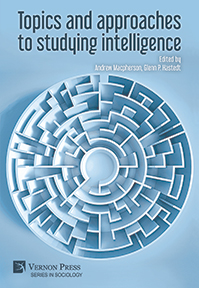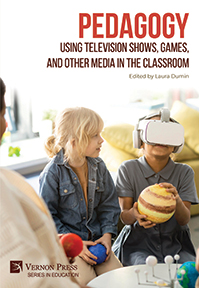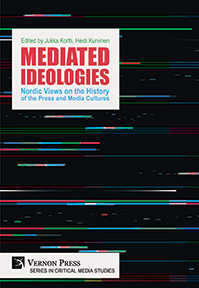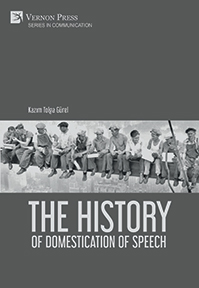Search
Browse
by Publication status
by Subject
Anthropology (26) Art (171) Business and Finance (38) Cognitive Science and Psychology (63) Communication and Journalism (51) Economics (116) Education (71) History (169) Human Geography (23) Interdisciplinary (43) Language and Linguistics (178) Law (16) Music Studies (18) Philosophy (222) Political Science and International Relations (127) Sociology (404) Statistics and Quantitative Methods (21)by Series
Series in Literary Studies (62) Series in Philosophy (57) Series in Education (49) Series in Sociology (42) Series in World History (31) Series in Politics (30) Bridging Languages and Scholarship (26) Series in Language and Linguistics (25) Cognitive Science and Psychology (20) Series in Philosophy of Religion (20) Series in American History (19) Series in Art (19) Critical Perspectives on Social Science (16) Series in Cinema and Culture (16) Curating and Interpreting Culture (15) Series on the History of Art (14) Series in Anthropology (13) Series in Critical Media Studies (13) Economics (13) Series in Business and Finance (12) Series in Music (12) Series in Performing Arts (9) Philosophy of Personalism (8) Series in Communication (8) Series in Law (8) Series in Economic Methodology (7) Series on Climate Change and Society (7) Classics in Economics (6) Series in Economic Development (6) Women's Studies (6) Philosophy of Forgiveness (5) Series in Built Environment (5) Series in Economic History (5) Series in Philosophy of Science (4) Series in Social Equality and Justice (4) Series on the History of Science (4) Serie en Sociología (3) Series in Contemporary History (3) Series in Creative Writing Studies (3) Series in Design (3) The Interdisciplinary Built Environment (3) Series in Heritage Studies (2) Series in Innovation Studies (2) Serie en Ciencias Políticas (1) Serie en Comunicación y Medios (1) Serie en Entorno Construido (1) Serie en Estudios Culturales (1) Serie En Estudios Literarios (1) Serie en Filosofía (1) Serie en Música (1) Series in Classical Studies (1) Series in Economics of Technological Change (1) Series in Philosophy of Race (1) Series in Urban Studies (1)by Language
English Spanishby Author
Browsing with filters

No More Haunted Dolls: Horror Fiction that Transcends the Tropes
Edited by
Cassandra O'Sullivan Sachar, Bloomsburg University of Pennsylvania
Availability: Forthcoming
$107 £86 €100
'No More Haunted Dolls: Horror Fiction that Transcends the Tropes' is a multi-author work united by the common theme of critical analysis of the use of horror tropes in literature, film, and even video games. Tackling issues dealing with gender, race, sexuality, social class, religion, politics, disability, and more in horror, the authors are horror scholars hailing from varied backgrounds and areas of specialty. This book may be used as a resource for classes that study horror or simply as entertainment for horror fans; readers will consider diverse perspectives on the tropes themselves as well as their representation in specific works.
Topics and approaches to studying intelligence
Edited by
Andrew Macpherson, University of New Hampshire
and Glenn P. Hastedt, James Madison University
Availability: Forthcoming
$81 £65 €76
The goal of "Topics and approaches to studying intelligence" is to bring into sharper focus the evolving nature of intelligence studies, which is in the midst of a period of significant expansion that is taking place across a number of dimensions. Working on this foundation of past and contemporary analytic intelligence studies, the chapters in "Topics and approaches to studying intelligence" highlight areas of debate and disagreement, provide insight into new areas of study and broaden the methodological toolset used by researchers. Both qualitative and quantitative approaches investigate analysis, alliances, competitive/private sector intelligence, gendered practices of intelligence agencies, the nature of intelligence studies scholarship, accreditation, intelligence disclosure for diplomacy, and the sharing of nuclear-related intelligence
Pedagogy: Using Television Shows, Games, and Other Media in the Classroom
Edited by
Laura Dumin, University of Central Oklahoma
Availability: In stock
202pp. ¦ $74 £59 €69
This book takes a dive into moving beyond the essay as the only method for teaching and learning content. Authors range from instructors in K-12 to instructors in higher education and look at concepts as varied as using VR technologies to provide immersive experiences to students to use an app to help supplement teaching. Instructors in a variety of fields, both in and out of the writing classroom, may find project and assignment ideas to argue in their own classrooms. Instructors looking to provide a transformative learning experience in a new way will find lots of options here.
Mediated Ideologies: Nordic Views on the History of the Press and Media Cultures
Edited by
Jukka Kortti, University of Helsinki, Finland
and Heidi Kurvinen, University of Turku, Finland
Availability: In stock
252pp. ¦ $101 £81 €94
Ideologies have not been a focus of interest in the field of humanities and social sciences in recent decades, but rethinking the power of ideologies in the media sphere has recently returned to the scholarly discussion. The compilation book “Mediated Ideologies: Nordic Views on the History of the Press and Media Cultures” participates in this by providing selected yet justified approaches to media history from the point of view of ideological uses of media in the Nordic region. In this book, the role of media – comprising both popular media and news journalism – as a forum for ideologies and their circulation will be analyzed by focusing on the Nordic region. The perceived similarities in the media systems of the Nordic countries constitute a perfect extent for a regional media history against not only a European but also a global backdrop. This does not mean that there have not been many national differences. The book does not provide a chronological narrative of Nordic media history. Still, the ideology of media is approached not only from the standpoints of different media forms – film, television, newspapers, magazines, and periodicals – but also from several historical periods from the mid-19th century to the late 20th century. The chapters show the multidimensional role that the media has in transmitting ideologies to their audiences and the public sphere. They also demonstrate that analyzing the role of different ideologies, such as modernization, nationalism, solidarity, feminism, and peace movement in media history provides wider perspectives in understanding past and present media landscapes and people’s mediated experiences that are fostered by them. “Mediated Ideologies: Nordic Views on the History of the Press and Media Cultures” can be used both as a reference book and as a classroom adaption in the field of media, communication, and history studies.
The History of Domestication of Speech
February 2024 / ISBN: 978-1-64889-818-1Availability: In stock
142pp. ¦ $55 £44 €52
Throughout history, speech has been forbidden or at least restricted to the laboring classes. Enslaved people laboring in ancient Egypt or working on Latin American plantations were forbidden to speak during work. In the early period of nation-states, the language of many peoples was forbidden because of the sovereignty of the lingua franca. Censorship has taken various forms in the history of all states. Talk amongst the laboring classes could lead to revolt and revolution; for this reason, speech was restricted during the harshest periods of labor. However, speech could be commercialized and reproduced in a society where all individuals were atomized entirely and isolated, in an environment where meaning was almost lost. In short, speech was supervised and controlled for the oppressed until the second half of the 20th century. However, especially in the postmodern period, speech has been supported at every point and subjected to significant inflation as if it were detached from meaningfulness. The pressures previously placed on the speech of workers and marginalized groups have suddenly diminished; speech everywhere has been commercialized and reproduced. This book analyses the causes of this evolution.






